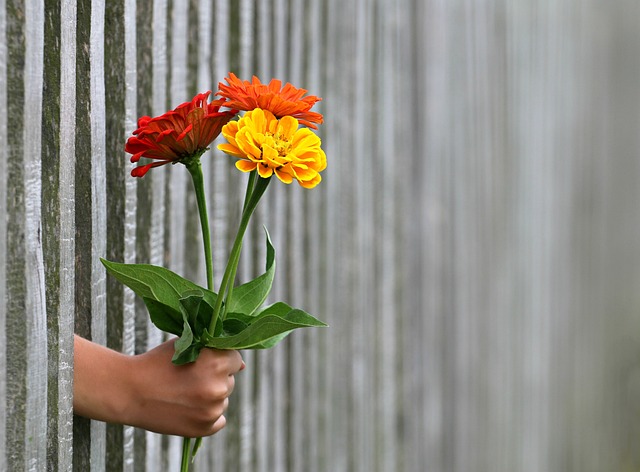The article section discusses the role of attire in funeral services as a means of respecting the deceased and adhering to cultural or religious traditions. It emphasizes that funeral planning, directed by funeral directors, extends to selecting appropriate clothing, which should convey solemnity and respect. Dark conservative garments are typically recommended, but choices can vary based on cultural practices or the individual's personal preferences. Funeral directors guide mourners in these decisions, ensuring dignity and respect for the ceremony. They offer advice on color symbolism and fabric selection suitable for both the event's gravity and the weather, ensuring comfort and propriety throughout the service. The section highlights that while black is traditionally associated with mourning, the attire can also reflect the deceased's personality or cultural background, making the funeral a meaningful and personalized tribute. Funeral directors play an integral role in this process, facilitating a respectful and intimate memorial experience by balancing traditional norms with individual wishes, thus ensuring a lasting and dignified memory for the bereaved family. Keywords: Funeral services, Funeral planning, Funeral director.
navigating the delicate process of funeral planning can be a challenging task. Among the considerations are the choices of funeral clothing, which carry deep symbolism and personal meaning. This article offers comprehensive guidance on selecting appropriate attire for funeral services, ensuring respect for cultural conventions and individual traditions. From understanding the significance of funeral clothing to practical tips with the assistance of a funeral director, learn how to make informed decisions that honor both the deceased and the living. We delve into color considerations, the role of tradition in personalization, and finalizing your choices with confidence. Whether you’re planning a service or preparing ahead, these insights will aid in choosing attire that respects the gravity of the occasion while reflecting the unique life celebrated during funeral services.
- Understanding the Significance of Funeral Clothing
- Guidelines for Choosing Appropriate Attire for Funeral Services
- Color Considerations and Cultural Conventions in Funeral Planning
- Practical Tips for Selecting Funeral Clothing with the Help of a Funeral Director
- The Role of Tradition and Personalization in Funeral Attire Selection
- Finalizing Your Choices: Making Decisions on Funeral Clothing with Confidence
Understanding the Significance of Funeral Clothing

When attending funeral services, the attire one chooses can reflect both respect for the deceased and adherence to the cultural or religious context of the ceremony. Funeral planning often involves considerations beyond the logistics of the service; it also encompasses the selection of appropriate clothing as a sign of reverence and support for the bereaved family. The funeral director, a pivotal figure in these proceedings, can guide mourners on the most fitting attire, taking into account local customs and the preferences expressed by the deceased’s loved ones. Traditionally, dark-colored, conservative clothing is recommended, as it signifies solemnity and respect for the occasion. The choice of garments should be made with sensitivity to the gravity of the event and the emotional state of those involved. It is a thoughtful gesture that contributes to the dignity of the funeral services and the healing process for all who are part of the ceremony. In coordinating your attire, whether you defer to the advice of a funeral director or your own judgment, remember that the goal is to honor the life celebrated and the loss felt, ensuring that your appearance respects both the deceased and the sanctity of the event.
Guidelines for Choosing Appropriate Attire for Funeral Services

Color Considerations and Cultural Conventions in Funeral Planning

When contemplating funeral clothing, color considerations and adherence to cultural conventions play pivotal roles in the selection process. Typically, somber colors such as black, dark blue, and purple are traditionally favored for funeral services due to their association with mourning. These hues convey a sense of respect and solemnity that is often expected during such somber occasions. However, cultural conventions may influence this choice. For instance, in some cultures, white or other lighter shades might be preferred as they symbolize purity and the deceased’s transition to the afterlife. In these cases, it’s essential to consult with the funeral director, who can provide guidance on the prevailing customs within the community and ensure that the family’s choices align with cultural expectations and traditions during funeral planning. The funeral director’s expertise is invaluable in navigating the delicate nuances of these conventions, offering peace of mind to those arranging the services. They can assist in selecting appropriate attire that honors both the deceased and the cultural practices, ensuring that each element of the funeral service reflects dignity, reverence, and respect for the life being celebrated.
Practical Tips for Selecting Funeral Clothing with the Help of a Funeral Director

When the time comes to plan funeral services, selecting appropriate attire is an essential part of honoring the deceased and supporting grieving families. A funeral director plays a pivotal role in guiding individuals through this process, ensuring that the clothing choices reflect both the personal wishes of the departed and the solemnity of the occasion. One of the first considerations for funeral planning is to understand the dress code indicated by the funeral service provider. Typically, dark-colored suits or dresses are standard; however, some cultural or personal preferences may vary this guideline. A funeral director can provide clarity on these matters and suggest color palettes that are respectful yet in line with the family’s wishes.
In addition to color choices, the fabric and style of the clothing should be practical for the weather conditions and the nature of the ceremony. A funeral director can advise on layering options if the service is outdoors or during a season where temperatures may fluctuate. They can also assist in selecting garments that are comfortable for a long period of sitting, standing, or walking, as funeral services often last several hours. The director’s expertise ensures that every detail, from buttons to hemlines, contributes to the dignity and reverence of the event. By offering thoughtful suggestions and a deep understanding of the protocols surrounding funeral planning, a funeral director helps create a meaningful and respectful experience for all involved.
The Role of Tradition and Personalization in Funeral Attire Selection

When attending funeral services, the attire one chooses can reflect both the traditions upheld by the deceased and their family, as well as offer a personal touch that honors the individual’s life. Traditional funeral clothing often adheres to specific cultural or religious practices, with colors and styles that have been passed down through generations. Black, for instance, has long been the conventional choice for mourning, symbolizing sorrow and respect for the deceased. However, as societal norms evolve, there is a growing trend towards more personalized expressions of grief and remembrance. Funeral planning today often involves discussions with the funeral director about whether to adhere to these traditional color schemes or to select attire that reflects the personality or preferences of the person who has passed away. This could mean wearing colors that held significance in the deceased’s life, such as a favorite hue or one that was part of a personal identity, like a uniform from their profession.
Incorporating personal touches into funeral attire is a way to celebrate the life lived by the departed and to provide comfort to those left behind. The role of the funeral director in this process is multifaceted, as they guide families through the selection of funeral services and clothing with sensitivity and understanding. They can offer advice on what might be most appropriate for the ceremony while respecting the family’s wishes and traditions. This delicate balance ensures that the funeral is a fitting tribute, allowing friends and loved ones to come together in a manner that feels both dignified and intimate. By selecting attire with intention, families can create a lasting memory of the funeral services, one that is deeply personal and steeped in the traditions that matter most to them.
Finalizing Your Choices: Making Decisions on Funeral Clothing with Confidence

When the time comes to plan funeral services, selecting appropriate funeral clothing is an important part of honoring the deceased and providing comfort for mourners. This decision should reflect the individual’s personality, religious beliefs, or cultural practices while also aligning with the solemnity of the occasion. The role of a funeral director in this process is pivotal; they offer guidance and support to navigate the choices available for funeral clothing. These professionals understand the sensitivity required and can provide valuable insights into what would be most fitting.
In the midst of planning funeral services, it’s essential to consider the garments that will be worn by both the deceased and the attendees. The choice of clothing can serve as a final testament to the character and life of the person who has passed away. Typically, black or dark-colored attire is traditionally preferred at funeral services, as it conveys respect and solemnity. However, some families may choose a color that holds personal significance to the departed. Funeral directors can assist in sourcing these items, whether they are purchasing new ones or selecting from the wardrobe of the deceased. They can also help coordinate with florists or other vendors for additional touches that personalize the service and reflect the individual’s life and legacy. By entrusting the funeral director with these decisions, families can make their choices confidently, knowing that every detail is being handled with dignity and care.
When contemplating funeral clothing, one must consider both the significance of the attire and the nuances of cultural conventions. The guidance provided in this article, from the practical tips offered by a funeral director to the balance between tradition and personalization, ensures that individuals can make informed decisions with confidence. By understanding the importance of suitable attire within funeral services and adhering to the color considerations outlined, one honors the deceased while navigating the complexities of funeral planning. Selecting appropriate funeral clothing is a meaningful step in the process of laying to rest a loved one, and doing so with professional advice can provide both comfort and dignity during this sensitive time.
